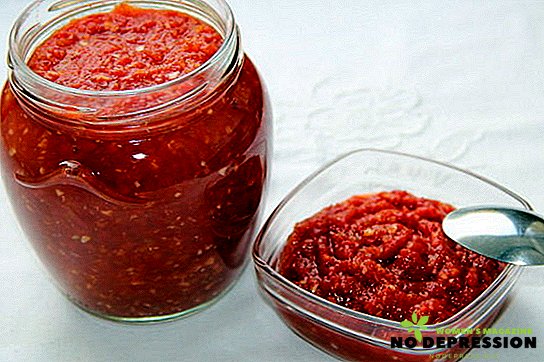A decade ago, young parents did not particularly ask this question, since almost everyone learned to read with the help of a simple primer with a blue cover and an orange-colored image of the capital letter “A”. Millions of babies diligently studied the immortal texts, which told the story of how mom washed the frame.

Now, all these crumbs have grown and got the same charming kids. When children have reached the right age for teaching literacy and reading skills, young parents are faced with a difficult choice, because now there are an incredible amount of methods by which their children can be taught reading.
And how can you not turn to different options? After all, too little time to figure out which technique is the best.
When to start learning
 With such a serious and responsible task it is better not to hurry. The exact age is extremely difficult to specify, because each child is individual.
With such a serious and responsible task it is better not to hurry. The exact age is extremely difficult to specify, because each child is individual.
Some people at the age of 4 are incredibly boring to memorize letters and generally sit longer in the same place for longer than 5 minutes. And others can already with enthusiasm add the syllables of letters at the age of 3, and concentrate on looking at the alphabet.
Upon reaching the child 5-6 years old, he already needs to know the basics of literacy. After all, it is precisely in these years that preparations for school take place. Printed letters should already be mastered.
Of course, if your child attends a kindergarten, teachers must teach him the basics of writing and teach him to read by syllables.
However, most mothers prefer to stay with their children at home until they go to school, so the responsibility for teaching reading and writing skills falls on their shoulders.
Algorithm of learning and reading preparation
Begin to prepare for reading as soon as possible. To do this, you must constantly tell the child a variety of fairy tales, re-read the books he liked.
It is necessary to start this when the baby becomes confidently seated. These procedures will not only help "fit" the little one, but also open the door to him in a huge and exciting world.
 The first literature for the crumbs should be colorful, decorated with lots of bright drawings. Strength is also worth scrupulous. The best option - books with thick cardboard or textile pages.
The first literature for the crumbs should be colorful, decorated with lots of bright drawings. Strength is also worth scrupulous. The best option - books with thick cardboard or textile pages.
The content of children's literature is another crucial aspect. Book pages should contain simple and understandable poems, illustrated with images of various animals and simple objects. S. Marshak, B. Zakhoder, A. Barto, V. Berestov - the best children's authors for many decades.
These writers are able to tell an incredible exciting story, using simple and understandable words. Studying their amazing quatrains is easier than ever. They have a beneficial effect on the development of the memory and attention of each child.
It also does not hurt to get cubes for games for your child to play, which depicts various letters and animals, whose names begin with the corresponding alphabet letters.
This technique is great for learning the characters of the alphabet, but not for reading by syllables. After all, the kid, for example, remembered that "M" is a bear, and "A" is a stork, and flatly refuses to understand why mum is obtained from these two animals.
How to teach a child to read syllables together: popular techniques
Teach to read the syllables of the child will help a lot of techniques. Consider the most popular:
- Primer.
They are considered the most that neither is in the traditional way. With their help, children learn to make syllables out of sounds, and then build whole words.

These manuals are complemented by exercises that help to combine vowels and consonants. Choose a good primer to help its content. In this manual, the letters should be introduced gradually and accompanied by examples of connecting with each other.
- Whole words.
This technique was developed by Glenn Doman. The meaning of this method is that a child from 2 months of age should be shown cards, preferably very quickly, on which words are depicted. The show must be accompanied by voice acting.
To begin such a technique should be a small "lessons" for 5-7 minutes and gradually increase the duration. Alas, this method quickly annoys the children and does not allow them to study the alphabet signs separately, as well as to understand the declination.

- Zaitsev's cubes.
The teacher from St. Petersburg has placed all sorts of warehouses on the sides of the cubes and in the table cells. The positive aspect of this method: the child, while playing, remembers immediately the warehouses and various combinations of alphabet characters.
However, according to this method, it is difficult for a child to understand how, why, and why letters are connected. This can lead to the fact that the child begins to "swallow" the end, and the analysis of the composition of the word and completely put it at a standstill.

- MIR system (the earliest possible development).
Pavel Tyulenev is sure that, guided by his methodology, an average child already per year can easily add combinations of sounds, and at the age of two he will learn to read fluently. What needs to be done for this?
From birth, you should show your baby small cardboard or paper sheets, which depict letters. The main thing is that at this moment in the field of view of the child did not get other objects.

- Gaming technique.
All that the baby can be interested in is the game. You should not act like a strict school teacher when you teach your child the basics of reading. In no case do not sit him at the table with a stern look.
With this approach, the child will simply be capricious, indulge in, or completely leave on his important children's affairs. It is much more useful to come up with a variety of games in which a squirrel or chanterelle can bring some kind of cube or build a small shop, where there are goods starting with a certain letter, etc.

How to teach a child to read by syllables: ways
Let us consider ways of how you can easily and effectively teach your child to read by syllables.
First, you should help the child learn the vowels, preferably open. These are “Y”, “E”, “A”, “Y”, “O”. Then you can begin to study voiced consonants, such as "L", "M", "D". During training, you should utter only sounds denoting the alphabet.

Now it is possible to memorize deaf ones, among which are "X", "T", "W", etc.
Before the beginning of each lesson it is necessary to repeat everything that has already been learned. In this way, the kid will quickly complete the reading mechanism.
When part of the letters has already been studied, you can start reading by syllables. For such a purpose is excellent primer, which clearly demonstrated joining sounds.
Now you can do and memorizing syllables. The first combinations of sounds should not be complicated. It is recommended to start with MU, LA, MA, LU, MO. So, having understood how such simple syllables are formed, the child is aware of the general algorithm. And after a few lessons, the baby will be able to master the construction of combinations of sounds with hissing.
And, of course, do not forget to fix the material covered. When the child begins to confidently understand the structure and will consciously read the syllables, then you can proceed to memorizing the combinations more difficult, for example, OH, AM, etc.
When most of the additions of sounds have already been studied, it is worthwhile to start reading simple words: MA-MA, MO-LO-KO, CO-K, MA-SHA. The main thing: follow the correct pronunciation.
No need to teach the kid to sing syllables. This will help the child not to make big pauses between words, which will have a positive effect on the letter.
How to teach a child to quickly read syllables: the technique of the game
No baby training should take place without a game. Consider several techniques of games with which the child will comprehend the basics of reading.
- Syllabic house.
The child should fill in such a table independently as memorization of syllables-mergers. So the child will clearly see how much he has already learned. It’s not difficult to make it yourself. To do this, you need a large piece of paper (wallpaper or drawing paper), colorful paints, pencils or felt-tip pens, colored cardboard and glue.
 It is necessary to draw a large house on the base sheet, with balconies, a foundation, a roof and floors. Further, over the entire area of the "structure" we prescribe various syllables. Duplicate them on small squares of multi-colored cardboard.
It is necessary to draw a large house on the base sheet, with balconies, a foundation, a roof and floors. Further, over the entire area of the "structure" we prescribe various syllables. Duplicate them on small squares of multi-colored cardboard.
When one or another combination of sounds is mastered by a child, it is necessary for the child to assign a corresponding card to paste on a specific place on the house. Is the table all full? Do not rush to throw it away.
With its help, you can come up with different educational games, for example, to find a syllable, read syllables along a certain chain, read the mix of sounds and finish it before the word, etc .;
- Syllable coloring.
Such a game can be found in various notebooks or built independently, having found examples on the Internet. Before the child is the task to paint the picture, which is divided into parts.
In each division syllable is registered. And all combinations of sounds have their own personal colors. This process allows you to repeatedly repeat the syllable, which is accompanied by its memorization by the child;
- Picture + syllable.
 When the child has more or less begun to read independently by syllables, then it is worth applying this exercise. Task for the kid: to combine the syllable with the picture that begins with it.
When the child has more or less begun to read independently by syllables, then it is worth applying this exercise. Task for the kid: to combine the syllable with the picture that begins with it.
Also a variation of this assignment is the choice of the correct syllable among the set that corresponds to the beginning of the name of the depicted object. It is not necessary to buy such educational games, because they can be easily made at home.
In total, only cards from the syllable house and pictures, the names of which correspond to them, from the board games available at home will be needed.
Important tips for parents
- You should not immediately set the child to search for syllable. Before you learn it, the baby must hear it many times;
- Is it difficult for the child to correctly find the specified mix of sounds? Offer him several answers;
- never mind the success of other children. Every kid is an individual with his own abilities. A small amount of learned syllables will bring more benefits than a quick visual introduction to all;
- Do not be afraid to use a variety of exciting aids or active games while studying;
- do not strive to conduct a "lesson" as long as possible, it is much better to reduce their time and increase the number;
- long-term explanations the preschooler is not able to fully understand, therefore, the instructions should be as short and clear as possible;
- Before you scold the kid for not wanting to learn syllables, you should think about what exactly you are doing wrong. Try to find a different approach or use the game.
If the child is busy at the moment, it will not bring any result.
How to quickly teach a child to read can also be found in the following video.












